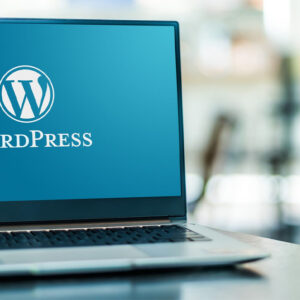Amazon PPC (Pay-Per-Click) advertising is essential for sellers looking to increase product visibility and sales. However, setting the right bid is crucial to achieving a high return on investment (ROI). If you bid too high, you may waste money on clicks that don’t convert. If you bid too low, your ads might not get enough exposure. This guide will walk you through the best strategies to set the perfect bid for your Amazon PPC ads while maximizing your ROI.
Understanding Amazon PPC Bidding
Before setting an optimal bid, it’s important to understand how Amazon’s bidding system works.
What is an Amazon PPC Bid?
A bid is the maximum amount you’re willing to pay for a single click on your ad. Amazon runs an auction system where higher bids generally win better ad placements. However, Amazon uses a second-price auction model, meaning you often pay less than your maximum bid.
Types of Bidding Strategies on Amazon PPC
Amazon offers three primary bidding strategies:
- Dynamic Bids – Down Only: Amazon lowers your bid if a click is unlikely to convert.
- Dynamic Bids – Up and Down: Amazon increases or decreases your bid based on the likelihood of conversion.
- Fixed Bids: Your bid remains constant regardless of conversion probability.
Each bidding strategy has its advantages depending on your campaign goals.

Step-by-Step Guide to Setting the Perfect Bid
1. Conduct Keyword Research
Your bid should align with high-performing keywords. Here’s how to find them:
- Use Amazon’s Keyword Tool or third-party tools like Helium 10 or Jungle Scout.
- Identify high-converting keywords relevant to your product.
- Check competitors’ bids using reverse ASIN lookup tools.
- Focus on long-tail keywords for lower competition and higher conversion rates.
2. Determine Your Advertising Budget
Your budget dictates how aggressive you can be with bidding. To set an efficient budget:
- Allocate at least 10-15% of your total sales revenue to advertising.
- Start with a daily budget that allows sufficient data collection.
- Adjust spending based on ACoS (Advertising Cost of Sales) and profit margins.
3. Use Amazon’s Suggested Bid Range
Amazon provides a suggested bid range based on market competition. You can:
- Start with a middle-range bid and increase or decrease based on performance.
- If you’re launching a new product, bid slightly above the suggested range to gain visibility.
- For competitive categories, adjust bids based on peak shopping times.
4. Optimize Bids Based on Placement Data
Amazon allows you to adjust bids for different placements, such as:
- Top of Search (First Page): More expensive but higher visibility and conversion.
- Product Pages: Moderate competition, good for cross-selling.
- Rest of Search: Cheaper clicks, lower conversion rates.
Use Amazon’s placement report to analyze which placement provides the highest ROI and adjust your bids accordingly.
5. Set Different Bids for Match Types
Amazon PPC offers three keyword match types:
- Broad Match: Covers a wide audience but can be less relevant.
- Phrase Match: More targeted, includes variations of your keyword.
- Exact Match: Highly precise, best for conversions.
To optimize bidding:
- Set lower bids for broad match to test new keywords.
- Use phrase match for moderate bidding.
- Bid highest on exact match keywords with proven performance.
6. Monitor and Adjust Bids Regularly
PPC campaigns require constant monitoring. Key actions include:
- Lower bids for keywords with high clicks but low conversions.
- Increase bids on profitable keywords to maximize exposure.
- Pause underperforming keywords to prevent wasted ad spend.
7. Use Automated Bidding Tools
Instead of manually adjusting bids, you can use Amazon’s Automated Bidding or third-party AI tools. These tools:
- Analyze performance trends.
- Adjust bids in real time to maximize conversions.
- Optimize cost-per-click (CPC) to improve ACoS.
8. Leverage Negative Keywords to Reduce Wasted Spend
Negative keywords help eliminate irrelevant searches that waste your budget. To implement:
- Add irrelevant search terms as negative keywords.
- Monitor search term reports to identify poor-performing keywords.
- Regularly update your negative keyword list to optimize ad spend.
9. Adjust Bids for Seasonal Trends
Amazon PPC bidding fluctuates during high-demand periods like:
- Black Friday & Cyber Monday
- Prime Day
- Holiday Season Sales
During these periods:
- Increase bids on high-converting products.
- Adjust budgets to accommodate increased traffic.
- Analyze past data to predict optimal bid adjustments.
10. Test & Optimize with A/B Experiments
A/B testing allows you to determine the best bidding strategy by:
- Running two different bid strategies on the same product.
- Comparing click-through rates (CTR), conversion rates, and ACoS.
- Identifying the most cost-effective bid strategy and scaling it up.
Conclusion
Setting the perfect bid for Amazon PPC ads requires a mix of strategic planning, continuous monitoring, and data-driven adjustments. By conducting proper keyword research, optimizing bids for different placements, leveraging automated tools, and adjusting for seasonal trends, you can maximize your ROI while keeping ad costs under control. Implement these strategies consistently, and you’ll see improved ad performance and increased sales over time.
FAQs
1. What is the best bidding strategy for Amazon PPC?
The best bidding strategy depends on your goals. If you want to maximize visibility, use dynamic bidding (up and down). If you want to control spending, use fixed bidding. Testing different strategies and adjusting based on performance is key.
2. How do I determine the right bid for my Amazon PPC campaign?
Start by analyzing your product’s average cost-per-click (CPC) in your niche. Use Amazon’s suggested bid range and test different bid amounts to see what brings the best return on investment (ROI).
3. What is the difference between automatic and manual bidding?
Automatic bidding lets Amazon adjust bids based on conversion chances, while manual bidding gives you full control over how much you bid per keyword. Manual bidding is ideal for optimizing costs and maximizing ROI.
4. How often should I adjust my PPC bids?
You should monitor and adjust your bids at least once a week. Increase bids for high-performing keywords and decrease them for those with high spend but low conversions.
5. What is a good ACoS for Amazon PPC ads?
A good Advertising Cost of Sale (ACoS) depends on your profit margin. Generally, an ACoS below 30% is considered efficient, but this varies by product category and business model.
6. How do I lower my ACoS while maintaining sales?
Lower ACoS by optimizing keyword targeting, using negative keywords to filter out irrelevant traffic, and adjusting bids to focus on high-converting keywords. Also, ensure your product listing is well-optimized for conversions.
7. Should I use dynamic bidding or fixed bids?
Dynamic bidding (up and down) works well if you want Amazon to automatically adjust bids based on conversion likelihood. Fixed bids provide more control but require frequent manual optimization.
8. How does bid placement impact performance?
Higher bids for top-of-search placements can increase visibility and conversions, but they also come at a higher cost. Balancing bid placement strategy with ROI is crucial for profitability.
9. What is the role of negative keywords in bid optimization?
Negative keywords prevent your ads from showing on irrelevant searches, reducing wasted ad spend and improving ACoS. Regularly updating your negative keyword list ensures better targeting.
10. How do I track and measure bid performance?
Use Amazon’s advertising reports to track key metrics like CPC, ACoS, conversion rates, and impressions. Adjust bids based on data insights to continuously improve campaign performance.




